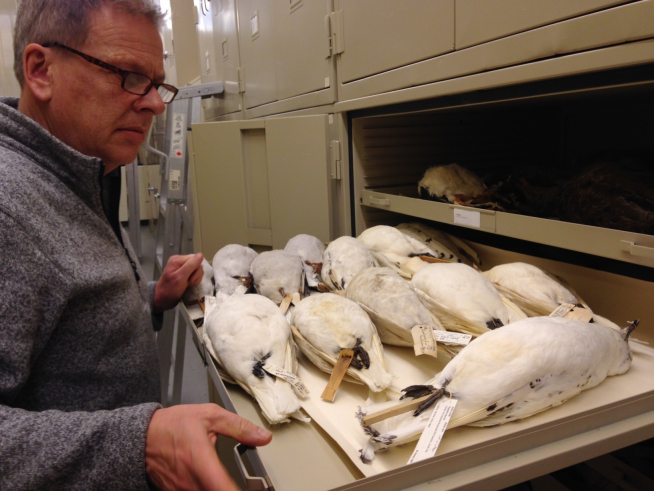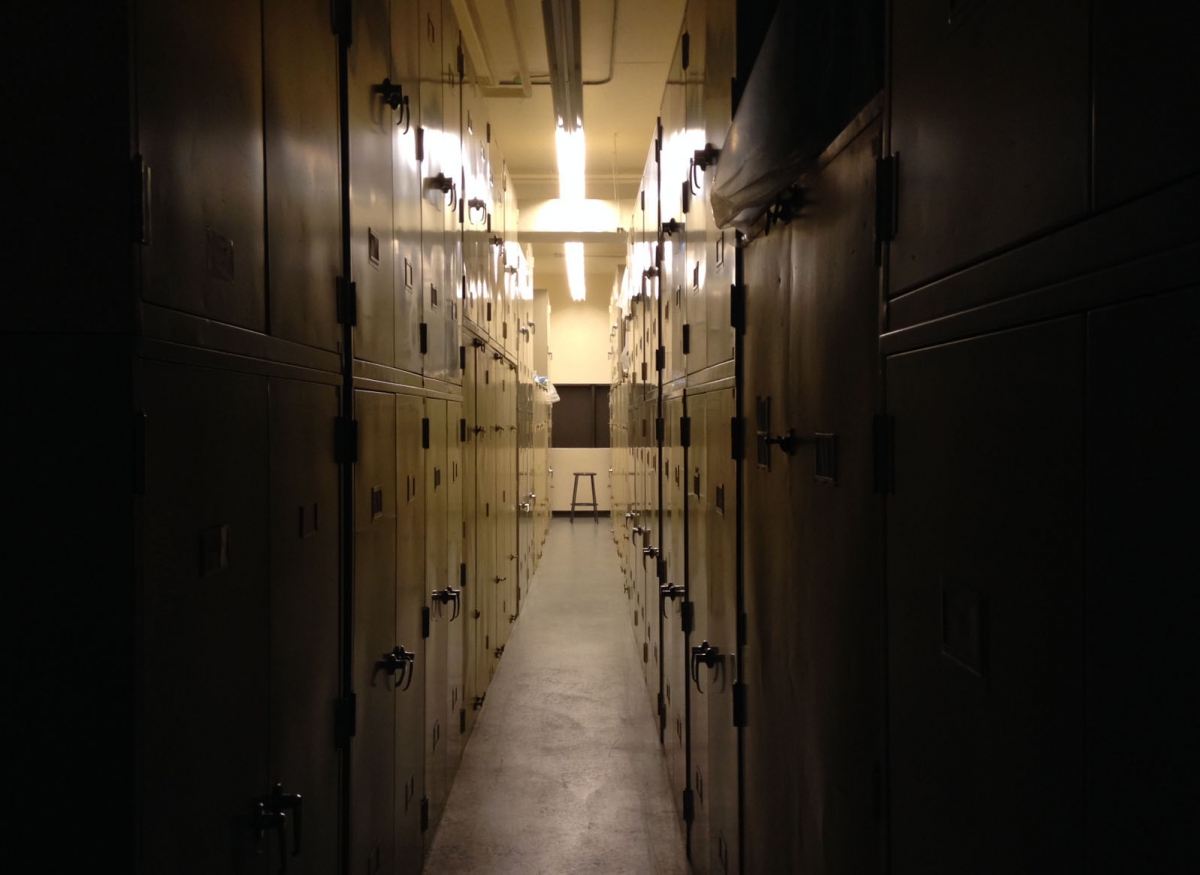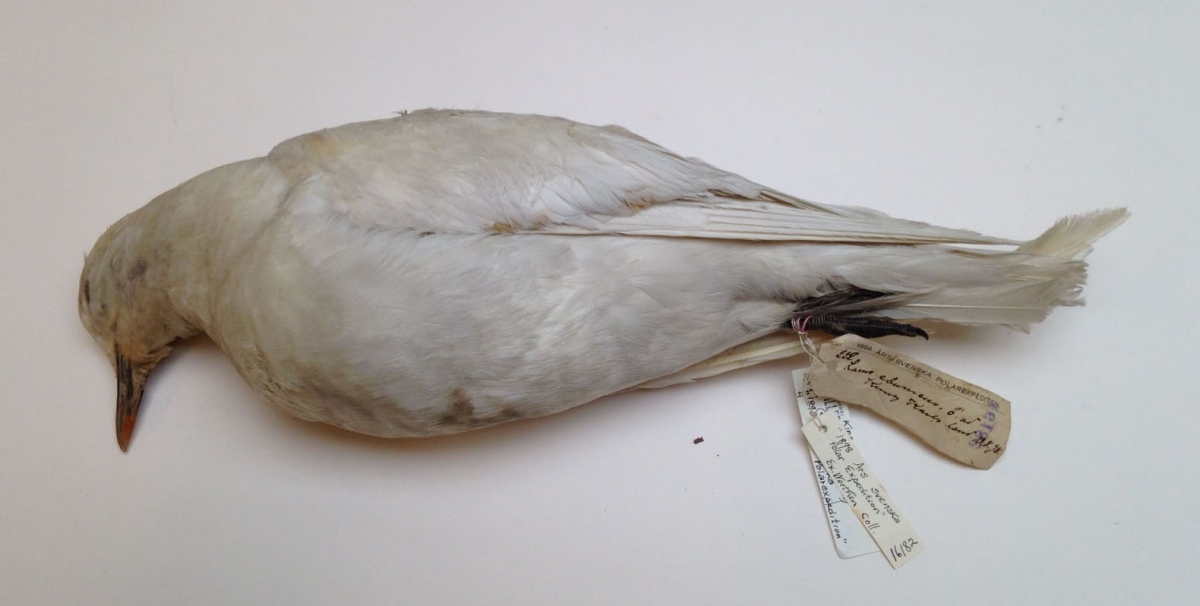Collections Matter

You might be surprised by what a little birdie can tell you. Actually, in this case the birdie isn’t so little, and there certainly isn’t just one. A growing discussion about the health of Canada’s Arctic stems from the information hidden within the feathers of 80 Ivory Gulls safely stored in museum drawers around North America.
New Research
A recent article published in the journal, Proceedings of the Royal Society B: Biological Sciences sheds light on a potential factor in the dramatic decline in populations of the Ivory Gull, a species endangered in Canada. It had already been clear that populations of this species had declined by more than 80% in the “pristine” Canadian Arctic in recent decades. What was also clear was the presence of high levels of mercury in Ivory Gull eggs. What was unclear was whether high levels of mercury in Ivory Gulls was a new phenomenon.
The Ornithology Collection
Behind the scenes at the Royal Ontario Museum are collection rooms. It’s a familiar sight for anyone who works in a museum; cabinet upon cabinet and drawer upon drawer. These collections are the result of decades of research, preparation, and care. They hold vast quantities of specimens that have many stories to tell. Within the ornithology collection there are skins, skeletons, nests, eggs and even blood and tissue; there are birds that were collected over 200 years ago; birds that are the representative of their species as it was described (known as a holotype); and extinct birds that no longer exist on our planet.

Museums have much on display for the general public. However, much of what they curate is safely stored behind the scenes, unseen to most. What is also often unseen is the role museum collections can play in our understanding of the natural world. In fact, sometimes, these collections can tell us things that we couldn’t have imagined when the ROM opened, 101 years ago.
Birds of a Feather
Scientists from the University of Saskatchewan came to the ROM to look at feathers. Specifically they wanted to sample feathers of the Ivory Gulls within our collection. The idea was simple. If levels of mercury are causing the recent population declines in Ivory Gulls, then you would expect to see increasing levels of mercury over time in these birds. It turns out that birds deposit mercury within their feathers, and mercury is stable over a long period of time. By studying the contaminate “load” in Ivory Gulls from museum collections in specimens spanning the time from 1877 to 2007, the authors were able to determine that Ivory Gulls have been increasing the amount of mercury ingested over the years, likely with fatal consequences.

The story of mercury and the Ivory Gull has been picked up by various news outlets both nationally and internationally. It has started a discussion about human impacts on the environment; about the geographical reach of our environmental pollutants, and about our dependence on coal. All of this from a few birds, housed in drawers, collected by individuals who could not have known the magnitude of the information hidded within them.
To learn more about the story of mercury and Ivory Gulls and what people are saying about it:
To learn more about some of the collections within the Department of Natural History join us for our Big Weekend: Earth, Sea, & Sky on April 11th and 12th
